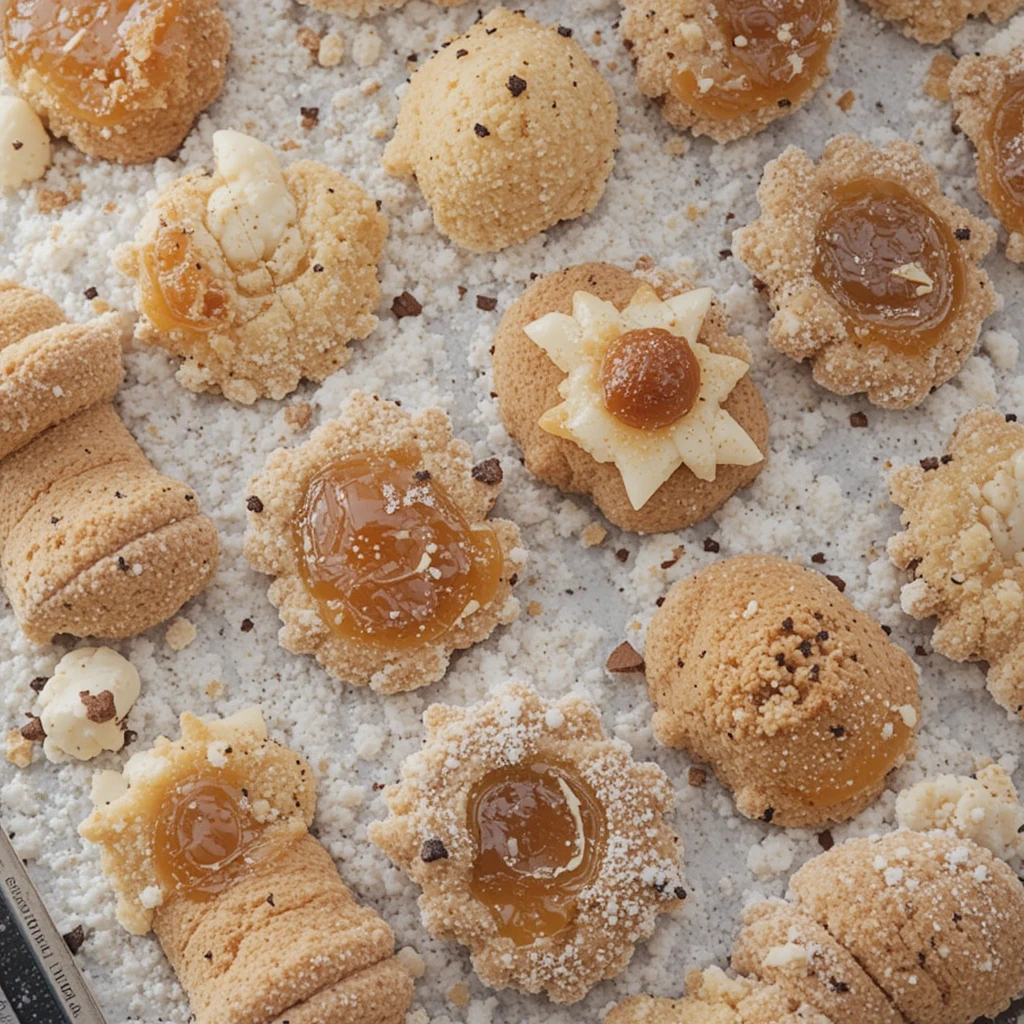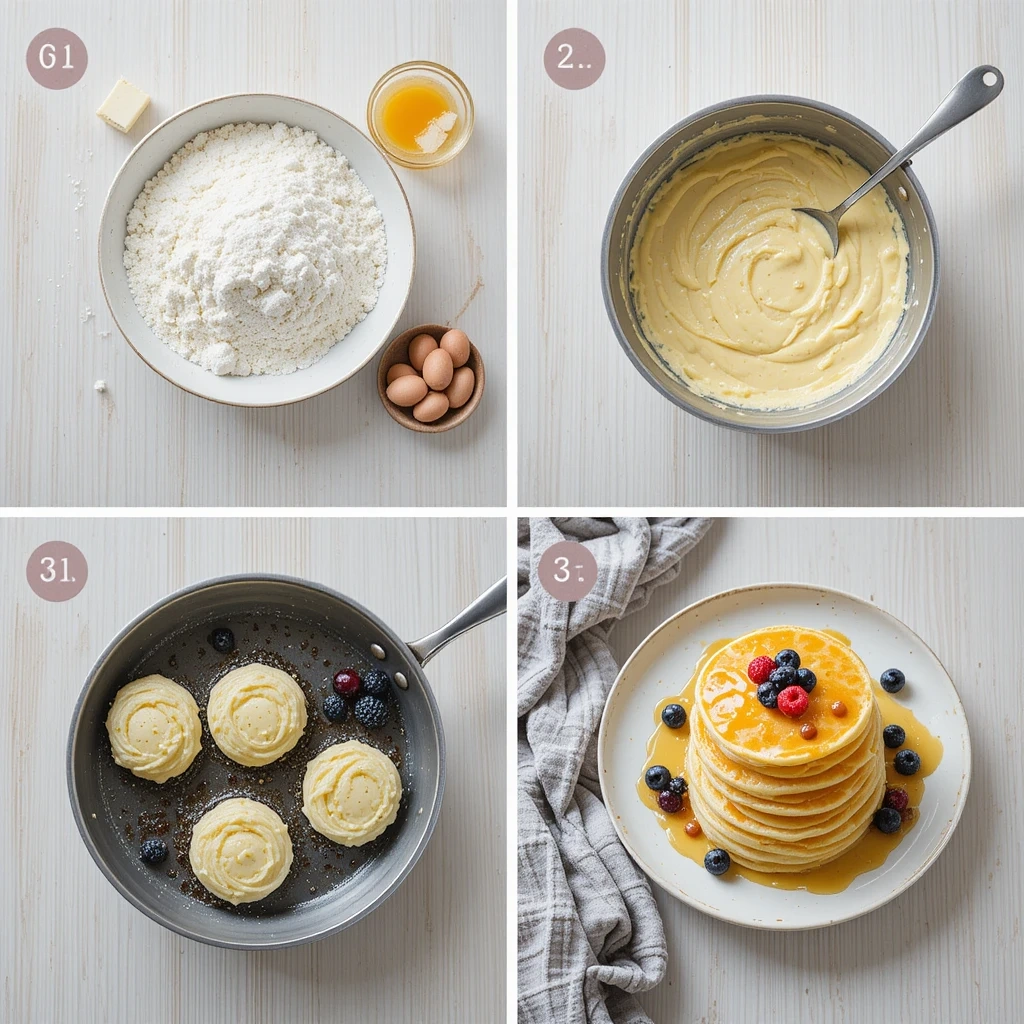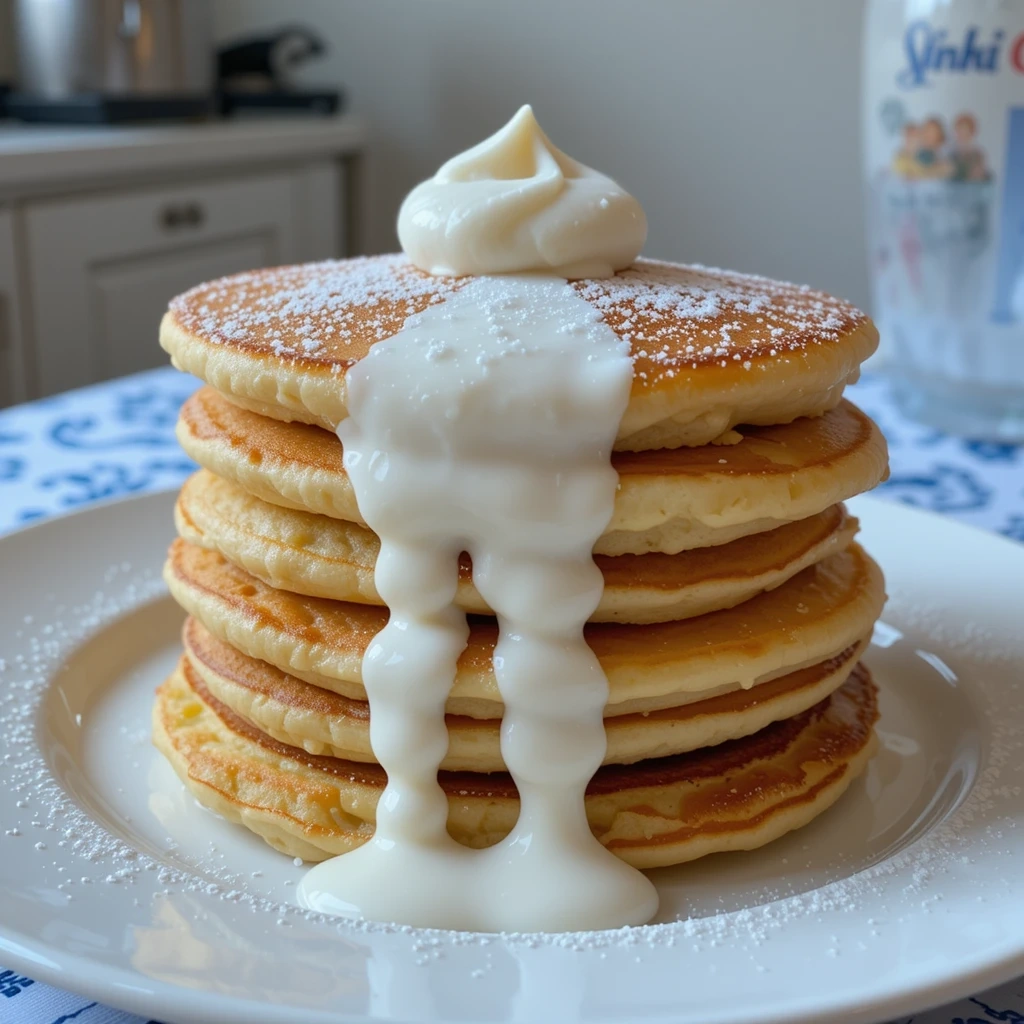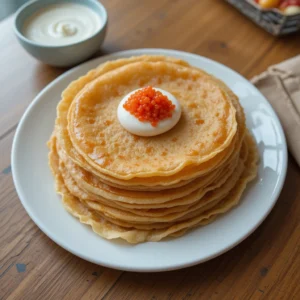Russian desserts offer a delightful glimpse into the country’s rich culinary heritage, presenting a diverse array of flavors and textures. From the famous Medovik (honey cake) to the comforting Syrniki (sweet cheese pancakes), these treats embody tradition, celebration, and the art of creating sweetness. Iconic desserts like Pryaniki (spiced honey cookies) and Ptichye Moloko (creamy mousse cake) showcase the delicate balance of spices, sweetness, and velvety textures that define Russian confections. This exploration delves into the history, classic recipes, unique flavors, and common mistakes to avoid when making these sweet delicacies, inviting you to discover the artistry and indulgence of Russian desserts.
Russian desserts are a delightful reflection of the country’s rich culinary heritage. From the famous honey cake, Medovik, to the indulgent sweet cheese pancakes, Syrniki, Russian Sugary delights come in a multitude of flavors and textures. Indulge in the delicate layers of the Napoleon cake or savor the comforting warmth of a bowl of kissel, a traditional fruit pudding.
Each dessert tells a story of tradition, celebration, and the art of creating sweetness in life. The Russian tea cake, known as “Pryaniki,” is a classic example of traditional Russian sweet treats. These spiced honey cookies are often shaped into intricate designs and are a staple during festive occasions.
The delicate balance of spices and sweetness makes Pryaniki a beloved treat for all ages. Another iconic dessert is the Ptichye Moloko, a luscious creamy mousse cake that has captivated dessert enthusiasts with its velvety texture and ethereal flavor. Whether it’s the buttery richness of a Pirozhki or the fruity allure of a plump berry vatrushka, Russian desserts offer a world of sweet indulgence waiting to be explored.
Table of Contents
Explore the Rich History of Russian Desserts
Want to try something different? Veibrant Recipes offers a recipe for Xango, an unconventional deep-fried cheesecake wrapped in a crispy tortilla and coated in cinnamon sugar. It’s a fun and indulgent treat that is sure to impress!
Natural Ingredients and Cultural Exchange
The use of ingredients such as honey, berries, and nuts reflects the abundance of natural resources in Russia, while the influence of Eastern European and Central Asian cuisines has added layers of complexity to Russian dessert traditions.
Iconic Desserts and Cultural Significance
One iconic dessert that embodies the historical significance of Russian sweets is the Blini. These thin, delicate pancakes have been a part of Russian cuisine for centuries and are often associated with Maslenitsa, a traditional Slavic festival celebrating the end of winter. The intricate preparation and symbolism behind Blini showcase the deep-rooted traditions associated with Russian desserts.
French Influence and Pastry-Making
Additionally, the influence of French culinary techniques during the reign of Catherine the Great introduced Russia to the art of pastry-making, leading to the creation of exquisite desserts like the Charlotte Russe. Exploring the rich history of Russian desserts provides a fascinating glimpse into the cultural heritage and culinary evolution of the country.
Try Your Hand at Classic Russian Dessert Recipes
Bringing the flavors of Russia into your kitchen can be a delightful culinary adventure. Classic Russian dessert recipes offer a blend of simplicity and sophistication, allowing home cooks to create indulgent sweet treats with ease. The renowned Medovik, or honey cake, is a classic Russian dessert that layers thin honey-infused cake rounds with luscious sour cream frosting, resulting in a harmonious balance of sweetness and tanginess.
Another beloved classic is the Sharlotka, a rustic yet elegant apple cake that highlights the natural sweetness of fresh apples with minimal adornment. For those seeking a more indulgent experience, mastering the art of making Pirozhki, savory or sweet stuffed buns, can be a rewarding endeavor. Whether filled with jam, cheese, or savory meats, these golden-brown pastries offer a delightful interplay of flavors and textures.
Additionally, exploring the art of crafting delicate Blini opens up a world of possibilities for creating both sweet and savory variations, from creamy cheese-filled Blini to decadent chocolate-stuffed versions. Trying your hand at classic Russian dessert recipes allows you to savor the authentic flavors of Russia in your own home.
Discover the Unique Flavors of Russian Confections
| Confection | Flavor | Ingredients |
|---|---|---|
| Medovik | Honey and caramel | Flour, honey, sugar, eggs, butter, baking soda |
| Pryaniki | Spiced gingerbread | Flour, honey, sugar, eggs, butter, spices |
| Kartoshka | Chocolate and wafer | Wafer crumbs, buttercream, chocolate glaze |

Russian confections are renowned for their unique flavor profiles that blend sweetness with hints of tartness and earthiness. The use of ingredients such as sour cream, farmer’s cheese, and various fruits creates a distinct flavor palette that sets Russian desserts apart. Take, for example, the Oladyi, small fluffy pancakes made with farmer’s cheese, which offer a delightful contrast between creamy richness and subtle tanginess.
The iconic Pastila, a traditional Russian fruit confection made from apples or berries, showcases the natural flavors of fruits preserved in a delicate, chewy treat. The infusion of floral notes in desserts like the Tsvetaeva cake, which features layers of sponge cake infused with fragrant elderflower syrup, adds an ethereal dimension to Russian confections. Furthermore, the use of nuts such as walnuts and almonds in desserts like Kartoshka (chocolate-covered potato-shaped cakes) and Kiev Cake (layered nut meringue cake) adds depth and texture to these delectable treats.
Exploring the unique flavors of Russian confections offers a sensory journey through a world of distinct tastes and aromas.
Satisfy Your Cravings with Decadent Russian Dessert Creations
Russian dessert creations are synonymous with decadence and opulence, offering an array of indulgent treats that cater to every sweet craving. The intricate layers of the Napoleon cake, also known as mille-feuille, showcase the artistry and decadence of Russian pastry-making. Each delicate layer of flaky pastry and luscious cream is a testament to the craftsmanship behind this iconic dessert.
For those with a penchant for creamy delights, the Smetannik, or sour cream cake, presents a luxurious blend of velvety sour cream frosting and moist cake layers that melt in your mouth with each bite. The indulgent chocolate truffles known as Kartoshka (literally “potato”) are a whimsical creation that combines rich cocoa flavors with a creamy center, resembling miniature potatoes dusted with cocoa powder. Additionally, the intricate decorations adorning cakes like the Kiev Cake or Bird’s Milk Cake elevate these creations to works of art that satisfy not only cravings but also aesthetic sensibilities.
Savoring decadent Russian dessert creations is an experience that celebrates the artistry and extravagance of sweet indulgence.
Learn the Art of Making Russian Sweet Delicacies at Home
Expand your dessert horizons by browsing the TasteAtlas list of best-rated desserts in Russia. You might discover a new Russian sweet treat to add to your must-try list!

Uncovering Cultural Significance
The process of making traditional Russian desserts also provides insight into the cultural significance and symbolism associated with these sweet treats. For example, crafting intricate designs on Pryaniki cookies reflects the artistic expression and attention to detail that are integral to Russian culinary traditions.
Traditional Recipes and Their Meaning
Similarly, learning to prepare Kissel, a traditional fruit pudding thickened with starch or arrowroot, offers an understanding of the comforting role that this dessert plays in Russian households during festive occasions.
A Deeper Appreciation for Russian Cuisine
Embracing the art of making Russian sweet delicacies at home not only allows you to savor authentic flavors but also fosters a deeper appreciation for the cultural significance embedded in these time-honored recipes.

5 Common Mistakes to Avoid and Their Solutions
1. Overmixing Batter: When preparing delicate desserts such as Blini or Oladyi pancakes, overmixing the batter can result in tough and dense textures. Solution: Gently fold the ingredients together until just combined to maintain a light and airy texture.
2. Using Cold Ingredients: Cold ingredients can hinder proper incorporation and affect the texture of desserts like Sharlotka or Smetannik cake. Solution: Ensure that ingredients such as eggs and dairy products are at room temperature before incorporating them into recipes.
3. Inaccurate Measurements: Inconsistent measurements can lead to uneven textures and flavors in desserts such as Medovik or Ptichye Moloko. Solution: Use precise measuring tools such as kitchen scales and measuring cups to ensure accuracy in ingredient quantities.
4. Overbaking: Overbaking delicate desserts like Napoleon cake or Charlotte Russe can result in dry and tough layers. Solution: Monitor baking times closely and use toothpicks or cake testers to check for doneness before removing from the oven.
5. Rushing Chilling Processes: Failing to allow desserts like Kiev Cake or Bird’s Milk Cake to properly chill can affect their structural integrity and flavor development. Solution: Follow recipe instructions for chilling times to ensure optimal texture and flavor in chilled desserts.
By avoiding these common mistakes and implementing their solutions, home cooks can elevate their mastery of classic Russian dessert recipes while ensuring consistent quality and delightful results.
FAQs
What are some traditional Russian desserts?
Some traditional Russian desserts include blini (thin pancakes), pirozhki (filled pastries), medovik (honey cake), ptichye moloko (bird’s milk cake), and vatrushka (sweet cheese buns).
What is the history of Russian desserts?
Russian desserts have a rich history that dates back to the 10th century, with influences from various cultures such as Mongolian, Scandinavian, and French. Many traditional Russian desserts are tied to religious and cultural celebrations.
What are some classic Russian dessert recipes?
Classic Russian dessert recipes include syrniki (cottage cheese pancakes), sharlotka (apple cake), kartoshka (chocolate-covered potato cake), and pryaniki (spiced honey cookies).
What are some unique flavors of Russian confections?
Russian confections often feature unique flavors such as honey, condensed milk, poppy seeds, and sour cream. These flavors give Russian desserts their distinct taste.
What are some common mistakes to avoid when making Russian desserts?
Common mistakes to avoid when making Russian desserts include overmixing the batter, using cold ingredients, not allowing dough to rest, overbaking, and not following the recipe accurately.
What are some solutions to common mistakes when making Russian desserts?
To avoid common mistakes when making Russian desserts, it’s important to follow the recipe closely, use room temperature ingredients, allow dough to rest as directed, and keep a close eye on baking times. Additionally, being mindful of overmixing can help ensure the desired texture of the dessert.

10 Traditional Russian Desserts You Must Try Right Now
Instructions
- 3 cups all-purpose flour, plus more for dusting
- 1 cup granulated sugar
- 1/2 cup (1 stick) unsalted butter, softened
- 2 large eggs
- 1/4 cup honey
- 1 teaspoon baking soda
- 1/4 teaspoon salt
- For the Sour Cream Frosting:
- 3 cups sour cream (full-fat)
- 1 cup powdered sugar
- 1 teaspoon vanilla extract
- In a heatproof bowl set over a saucepan of simmering water (double boiler), combine sugar, butter, eggs, honey, baking soda, and salt.
- Stir continuously until the butter is melted and the mixture is smooth. This will take about 5-7 minutes.
- Remove from heat and let cool slightly.
- Gradually add the flour, mixing until a soft dough forms.
- Divide the dough into 8-10 equal portions.
- On a lightly floured surface, roll out each portion into a thin circle (about 9 inches in diameter). Use a plate or cake pan as a guide and trim the edges.
- Place each circle on a baking sheet lined with parchment paper.
- Bake in a preheated oven at 350°F (175°C) for 5-7 minutes, or until golden brown.
- Let the layers cool completely on a wire rack. Crumble the trimmings and set aside for decoration.
Notes
- The chilling time is crucial for the cake to soften and for the flavors to meld together.
- You can add chopped nuts (walnuts or almonds) between the layers for extra texture and flavor.
- For a richer flavor, use browned butter in the cake layers.
- You can prepare the cake layers in advance and store them in an airtight container for a day or two.

